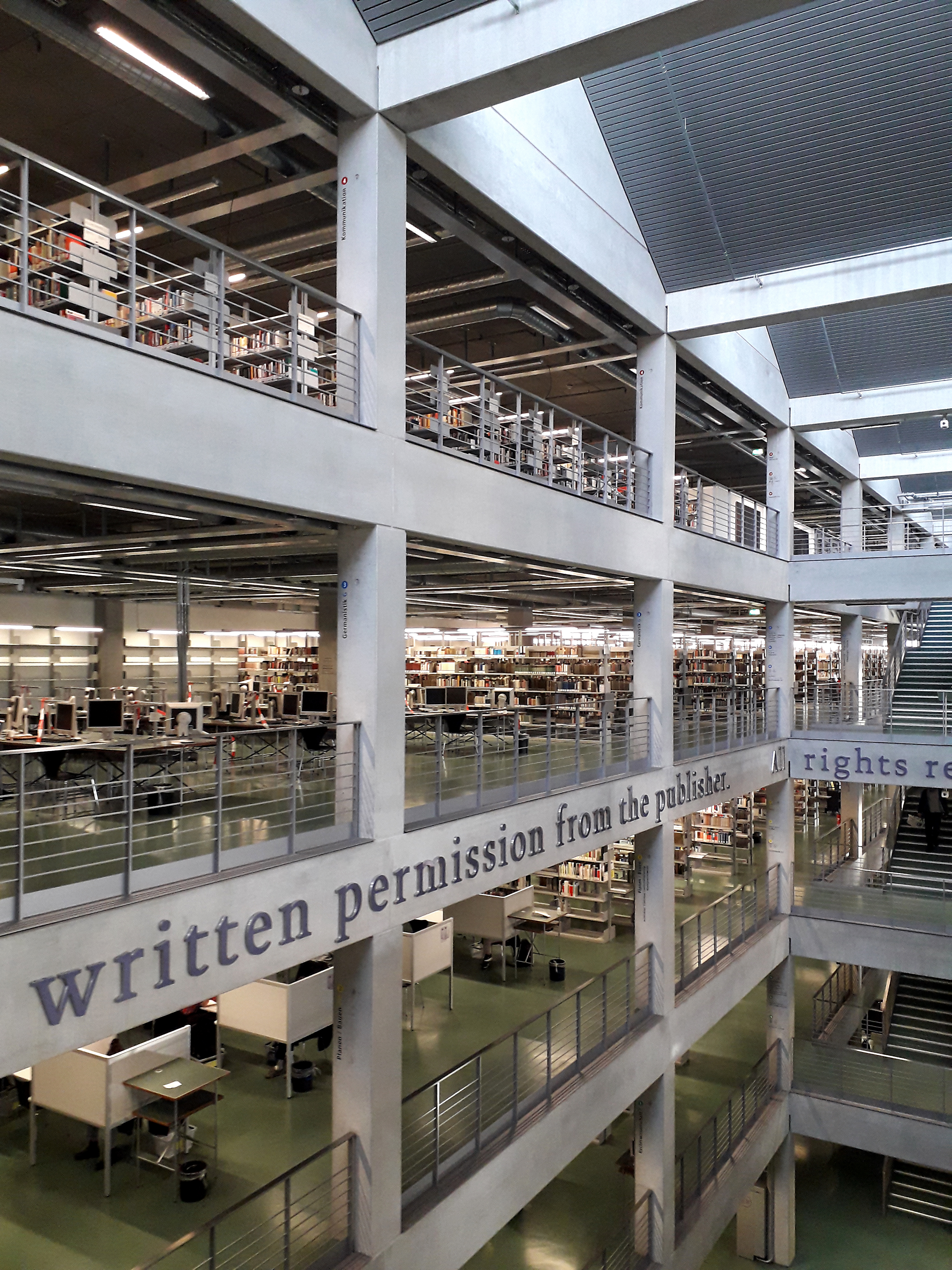2 Interface:
Computing complexity
2.1 A hybrid data pool
There is no overarching, stable order of the world. And if there was one, we shouldn’t imagine that we could ever be able to grasp it in its full complexity. But we can try to approximate it, get closer to it, and take as many significant influences as possible into account. In this way every real-world phenomenon becomes a unique network of mutually informed agencies. To scientifically deal with those singular assemblages, we shouldn’t press them into an already existing scheme until they fit but need to come up with a tailored approach for each of the analyzed situations.
What does all this mean for the example of the library? Every person, every organization, every culture has individual and distinct preconditions for acquiring and maintaining its knowledge. This circumstance makes it impossible to generally speak about the entirety of all libraries. Rather, I decided to choose one as my object of investigation: the Volkswagen University Library [VW Bib] in Berlin combines the collections of the library of the Technical University [TU] and the University of the Arts [UdK]. Therefore, it compounds a heterogeneous pool of knowledge and provides a space where students and researchers of diverse backgrounds go to. Furthermore, as a university library it distinctly functions as a service institution for the retrieval of knowledge supplementing academic work and research. Lastly, this library has been accompanying myself for a while. As a regular user I developed an elaborate relationship with it that can be considered as a sort of expert knowledge from a user-experience point of view. I have a sense about the spatial characteristics and the behavior the building promotes or tends to prevent. In my opinion this insider perspective is very much needed to create sustainable findings.
But to go into the depths of the knowledge system of VW Bib it requires more than analyzing it on an architectural level. Rather, this surface level of spatial materialization was formed around the underlaying systematization of knowledge. Or put differently: to understand the physical, architectural level you first must understand the knowledge system it was built for. Let’s therefore have a look at the library catalogue and how it functions. Like the big majority of German-speaking libraries VW Bib’s catalogue uses the Regensburger Verbundsklassifikation [RVK]. It can be regarded as the German variation of the Dewey-Decimal-Classification [DDC] which is the most utilized knowledge classification system for libraries worldwide. Established in the mid-19th century by Melvil Dewey, a librarian working at a college library in Massachusetts, it can be considered the representative peak of the tree-knowledge. Out of an excessive rationalist manner it organized the entire “universe of knowledge” in a decimal logic. The ten main categories are each organized into ten further subcategories, which subsequently have ten subordinate categories, and so on. From today’s standpoint the rigidity of that approach seems bizarre, but the relevance of the DDC can’t be underestimated in my opinion. If we think of a library today, we implicitly think of these sorts of classification systems. The RVK follows its original’s conceptual guidelines and only introduced small adjustments. For example, the strict organization in decimals was abandoned: Instead of ten main categories the RVK has 34. But the differentiation into strictly separated and hierarchically organized categories works just the same and therefore represents the linear and static tree-knowledge, too. This organizational approach wasn’t restricted solely to the management of knowledge but rather represented a general mode of thought throughout the modern era. With the transition from a paper-based-society to a digit-based-society I want to propose that this form of thought is now undergoing a transformation.
